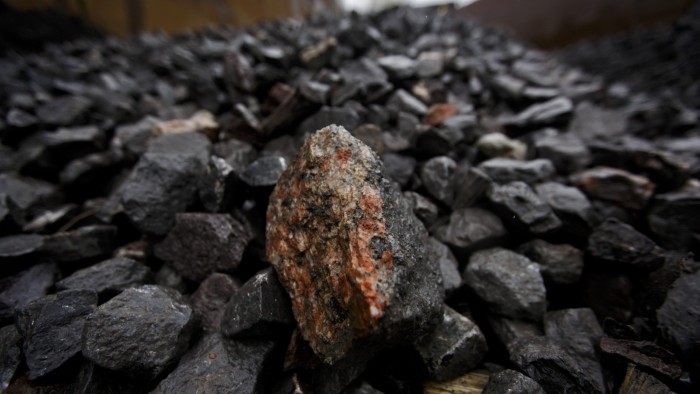Unlock the Editor’s Digest for free
Roula Khalaf, Editor of the FT, selects her favourite stories in this weekly newsletter.
The world must “immediately” make substantial investments in mining uranium to meet surging demand for nuclear energy, according to the latest industry stocktake that highlights the renaissance in the power source.
Currently identified uranium resources will be used up by the 2080s under a “high-growth” scenario that assumes nuclear capacity rises in the years to 2050 and then stays elevated, the Nuclear Energy Agency and International Atomic Energy Agency said in their biennial Red Book report released on Tuesday.
While “sufficient uranium resources exist” to support this growth “investments in new exploration, mining operations and processing techniques will be essential” to meet the demand, they wrote.
“Efforts must begin immediately to ensure adequate uranium supplies are available in the medium term,” they added.
National governments and big corporations alike are increasingly looking to nuclear as a low-carbon and reliable power source.
The US, UK and South Korea have pledged to triple global nuclear energy capacity by 2050 as part of a commitment launched at the 2023 COP28 climate summit.
Companies such as Microsoft and Amazon are also increasing their investments in nuclear power, as they bet on the technology to support the build out of new powerful data centres designed to run artificial intelligence systems.
The IEA said in January that nuclear energy had entered “a new era”, with interest at its highest level since the oil crises in the 1970s. Annual investment in nuclear increased by almost 50 per cent over the three years from 2020, it said.
Yet the soaring demand must be accompanied by investments in mining the metal used in nuclear fuel, the Red Book report said. Nuclear capacity will jump by 130 per cent by 2050 compared to 2022 levels under the high-growth scenario identified in the report.

But even this is likely to be an underestimate, since it only takes into account government policies and data to the start 2023 — before the recent surge in interest among companies and policymakers.
Industry figures have warned that western energy companies are at growing risk from a uranium shortage in the context of surging demand.
Kazakhstan — the largest producer of uranium, accounting for 43 per cent of global production in 2022 — has been selling more to Russia and China in recent years and less to the US and Europe.
Kazakhstan produced more uranium in 2022 than the combined output of Canada, Namibia, Australia and Uzbekistan, the next largest producers.

The report concluded there had been almost 8mn tonnes of “identified recoverable” uranium resources at the start of 2023, which could run out this century.
Additional, less well-explored deposits of uranium also existed, and the researchers expect that investments in exploration would also uncover deposits that are not currently known.
Reactors do not rely solely on newly mined uranium, as they also use “secondary” sources, such as material stored by governments and utilities.
“While secondary sources will continue to supply a portion of uranium demand, it is crucial to bring new facilities online,” the report concluded.
Source link









